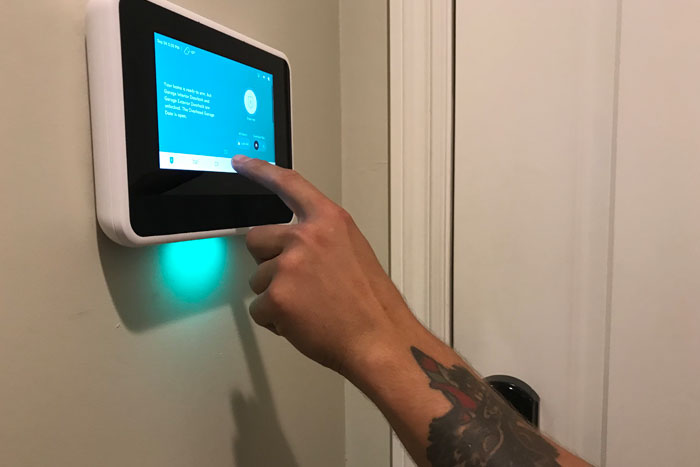
The Danger of Fentanyl | Fentanyl Awareness
When fentanyl was first starting to generate some media attention, the synthetic opioid was a good thing. It was a popular and extremely effective method to treat extreme pain. Doctors commonly prescribed it post-surgery, and patients with advanced cancer often used it to help control their pain. When used in a medical setting and under close supervision, fentanyl is a good thing.
The problem is that illicitly manufactured fentanyl isn’t used in a medical setting.
Fentanyl is extremely popular amongst the manufacturers of illegal drugs because it’s similar to heroin but even more potent. It is extremely common for heroin, meth, and cocaine to be laced with fentanyl. The addition of fentanyl enhances the effect of the other drugs. According to narcotics experts, fentanyl is 50 times more potent than heroin. The addition of fentanyl makes the other drugs extremely popular on the street and allows dealers to charge a premium. The problem is that fentanyl also makes the drugs more dangerous.
The CDC estimates that 150 people suffer a fatal fentanyl overdose every single day.
The symptoms of a fentanyl overdose are:
- Extreme nausea
- Confusion
- Repressed breathing
- Constricted pupils
- Choking sounds
If help is not received shortly after the first signs of a fentanyl overdose, the victim will lose consciousness and stop breathing. If they still don’t receive help, they will pass away. If you are near someone who has taken a suspected fentanyl overdose, calling the paramedics and dosing the victim with Narcan can help them survive the experience. According to LiveScience, Narcan is an effective treatment for fentanyl overdoses, but in 89% of the cases, more than one dose was required.
One of the reasons fentanyl is so dangerous is that some people don’t realize that they are using drugs that are laced with fentanyl or the fentanyl amount is higher than anticipated. The best way to detect the presence of fentanyl in drugs is to use fentanyl test strips which are relatively inexpensive and provide results in approximately five minutes. While the test strips are highly effective when determining if a supply of heroin or cocaine is laced with fentanyl, they won’t provide you with information about other popular and dangerous additives such as carfentanil.

Can I refuse to Perform a Sobriety Test?
You’ve been pulled over, and the police officer says that they suspect you’ve been drinking. They would like you to perform an immediate sobriety test so that they can determine if you’re officially driving while under the influence. At this point, some people meekly comply. Other people wonder if they have the right to refuse to take the sobriety test.
Strictly speaking, in California, you do have a legal right to refuse to perform a field sobriety test, but doing so may not be in your best interest. The problem with refusing to take the field sobriety test is that you could actually be giving the officer an excuse to arrest you so that they can perform a chemical test. In some cases, this is a good situation.
For example, if it’s been a long while since your last drink, it’s possible that your BAC will have decreased by the time the chemical test is administered, though this is rare. What is far more common is that someone who was not completely over the legal limit and who could have possibly passed a field sobriety test has more for the alcohol to be absorbed by the blood so that by the time the chemical test is administered, they have a significantly higher BAC than they did when they were originally pulled over.
By refusing to take the chemical test, you can be held in jail for a full forty-eight hours while you’re behavior is observed. You will also lose your driving privileges for a full year. It’s likely you’ll still be tried for DUI, and if you’re convicted, the sentence may be worse than what you’d have received had you simply submitted to the chemical test.
While the desire to refuse to take a sobriety test when you’re pulled over is perfectly natural, when all is said and done, it’s usually in your best interest to submit to the test.
What is the strangest field sobriety test you’ve encountered?

Illegally Using a Handicap Placard in California
It’s so frustrating to drive all around a parking lot and not find any empty places to put your car other than a handful of spaces that are reserved for handicapped parking. All of us are tempted to slide into one of those spaces, especially when we only need the spot for a short time, at one point or another. The reason we don’t is because there is a heft ticket attached to doing so.
While the ticket for parking in a sport that has been set aside for handicapped parking is all it takes for most of us to keep looking for a space at the back of the lot, some people look for a different way to use the prime parking spaces. They create/steal/borrow a placard and use it whenever they want to park close to the building. Few realize just how much trouble they’ll get into for the action. If you’re caught, you could go to jail.
The law that deals with the misuse of a handicapped disability parking placard is California’s vehicle code 4461 VC.
The law does an extremely good job of making it clear that anyone who hasn’t been issued a disabled parking placard is not allowed to use it. When you read through the law, you’ll learn that you:
- Aren’t allowed to lend the placard to another driver with the knowledge that they’ll use it to park
- Allow someone else to use the placard when you’re not also in the vehicle and planning on going into the building
- Aren’t allowed to display a placard that has expired or been revoked
- Use a placard that was issued to someone else
- Create a forged placard
Most people who get into trouble for using a handicapped parking placard when they aren’t supposed to assume that they will be given a ticket and a hefty fine. They’re partly correct. What many don’t realize is that the illegal use of a disability placard is actually fraud and is against the law. Instead of getting a relatively simple citation, you’ll actually be charged with a misdemeanor. If you’re convicted, you could be sentenced to some jail time.
The reality is that most people who are convicted of the illegal use of a disability placard aren’t sent to jail. Some are required to do some community service and pay a fine. What catches some people off guard is how large a fine they will have to pay. The maximum fine for the illegal use of a handicapped parking placard is $1,000. If the judge does decide to include some jail time into your sentence, you could be ordered to spend as much as six months in a county jail.

What Happens if I Disturb the Peace in California?
Disturbing the peace is kind of a blanket term in California. If you’re charged with disturbing the peace, it basically means that you did something to irritate someone. Examples of this can include anything from deciding to mow your lawn in the middle of the night to playing really loud music, getting into a fight, and even using language that someone near you found offensive.
The truth is that the police frequently get calls about disturbing the peace. While they always respond to these calls, they don’t always file charges. An example of a case where they might decide to skip filing charges and simply issue a warning is if a neighbor calls the police and complains that you’re swearing is disturbing their peace. In this situation, the police might ask you to clean up your language or at least swear quietly. They may also ask some questions to see if there’s an underlying and potentially illegal reason why your neighbor is so irritated with you.
On the other hand, if you’re throwing a party and the police have had several complaints about the noise, it’s likely that they will decide to press charges of disturbing the peace.
When you review Penal Code 415 PC, which discusses disturbing the peace in California, you’ll learn that people who are convicted of disturbing the peace are:
- (1) Any person who unlawfully fights in a public place or challenges another person in a public place to fight.
- (2) Any person who maliciously and willfully disturbs another person by loud and unreasonable noise.
- (3) Any person who uses offensive words in a public place which are inherently likely to provoke an immediate violent reaction.
If a disturbing the peace case makes it to trial, the main thing the prosecution must prove to secure a conviction is that the defendant willfully disturbed the peace. This is one of the main reasons many police officers issue a warning when they originally responded to a disturbing the peace call. It’s easy for a defendant to say that they didn’t know they were disrupting someone the first time a call is made. It’s harder for them to claim they weren’t willfully doing something that they knew irritated others the second, third, or fourth time the police are called.
The maximum sentence connected to a disturbing the peace conviction is a 90-day jail sentence and/or a $400 fine.

Are You Being Stalked? Warning Signs To Look Out For
Stalking is a serious problem. An estimated 6.6 million people are involved in a stalking situation, and that’s just in the United States! While the idea of being watched might not seem like a big deal, the reality is that it’s very concerning. Not only does catching the attention of a stalker erode your mental health, but it’s also a crime that can escalate until it culminates in violence. It’s reported that 68% of female stalking victims and 70% of male stalking victims receive threats of physical harm from their stalker.
Don’t assume that only women have to worry about stalkers. While it’s true that one in six women will be the victim of a stalker, men aren’t completely safe. It’s estimated that 1 in 17 men will have trouble dealing with a stalker.
Stalking is something you want to nip in the bud, which is why it’s so important to recognize the early signs that you’ve attracted a stalker.
Pay Attention to Your Surroundings and Be Alert to Familiar Faces
Stalkers often depend on people not being very aware of their surroundings. Being distracted by a cell phone or simply being focused on one thing allows stalkers to get quite close to the person they’re following without ever being noticed. Whenever you’re running errands or even when you’re just hanging out in your yard, be alert and constantly look around you. If you keep seeing the same person over and over again in different locations or near your home, it’s likely that you have a stalker.
Don’t assume that a stalker is always a stranger. If you keep running into the same relative, friend, acquaintance, or romantic interest in random places, it’s possible that they’re stalking you.
You Keep Getting Strange Calls
If you keep getting weirdly random calls, they can either be hang-ups, or they can be from someone who repeatedly claims to be dialing the wrong number, or they could be from someone who simply calls to chat too often, it could be a sign that you’ve attracted a stalker.
Unexpected Gifts
Sure, the random bouquet of flowers or an occasional box of chocolate from a secret admirer is fun. But when the gifts keep coming, and the person continues to conceal their identity, the gifts are usually an indicator of a stalker. Even if you know the person who is sending you gifts, if they are excessive or if they are inappropriate, it’s time to take steps to ensure your safety.
Pay Attention to Your Internet Interactions
Internet stalking is a growing problem. The internet provides people with a way to fixate on a person and keep tabs on them at all times of the day or night. It’s not uncommon for internet stalking to be paired with real-time stalking. It’s important to understand that internet stalking is every bit as dangerous as traditional forms of stalking.
Signs of internet stalking include large numbers of texts/emails/DMs from a person. They can also frequently comment on your posts. In most cases, internet communications become increasingly forceful and demanding.
Recognizing that you’re being stalked is the first stage in safely extracting yourself from the situation. The next step is knowing what to do about your stalker.

How to Protect Yourself from a Break-In in California
The first thing you need to do is make sure you’re in the habit of really locking up your home, both while you’re away and while in residence. This doesn’t just mean bolting the front door. Go through your house and make sure all the doors that lead to the exterior are locked. Next, do the same with your windows. This is also an excellent opportunity to check the quality of your locks. Make sure that they are in good repair and that they actually keep the door and window locked.
Don’t Be Ostentatious
Don’t make your home look like an appealing risk to robbers. This means you shouldn’t leave your expensive toys lying in the driveway. You also shouldn’t brag about all the valuables you have in your home. Living a quiet life and keeping all of your treasures tucked away might not seem like fun, but it will keep you and your personal property safe.
Be Smart with Your Spare Key
The best thing you can do to keep your home safe is to fit your door with a keypad and routinely change the code, but if you still use a key to open your doors, don’t leave a spare key tucked in a flowerpot or under your welcome mat. In fact, don’t leave the key anywhere outside where it could be found by a would-be thief. Keep your key on your person or tucked in a safe place in your car.
Burglar Proof Your Front Yard
Burglars are attracted to homes that provide a great deal of natural coverage or places where they can hide whenever someone drives past. Removing hedges, shrubs, sheds, and trees that are near your home will deter them. You should also set up a few motion-activated spotlights, yes, any passing wildlife will activate the lights, but they will also cause a burglar to look for a different place to rob.
The best way to make sure your home remains safe, especially while you are away, is to be discreet about what you share on social media. Don’t talk about your vacations and other trips until after you’re home. The last thing you want is to broadcast the fact that your home is unprotected.

